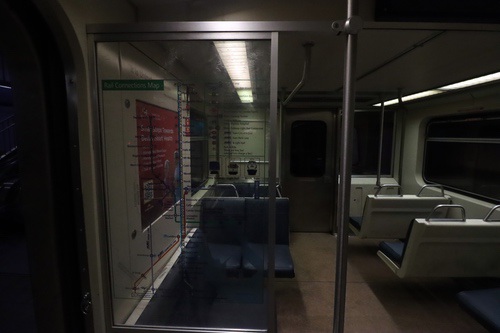Metro SubwayLink
on the SubwayNut
The Baltimore Metro SubwayLink, originally called just the Baltimore Metro is one of the smaller post-war subways to be built in the United States. It opened in three phases between 1983 and 1995. The system is entirely operated as one line operating in a bit of a reverse-J shape.
Service at least is quite frequent. As of February 2024 is scheduled at least every 15 minutes throughout the service day on weekdays and weekends (unless there is single-tracking for construction). This frequency on weekdays increases to every 8 minutes during rush hours, 10 minutes in the middle of the day, and every 11 minutes during weekday evenings.
The small and shortness of the Baltimore Metro SubwayLink is the smallest in terms of ridership and the shortest in terms of length of the modern post-war Metro systems to open in the Continental United States. PATCO and PATH are technically shorter but these are part of cities with additional subway lines and these are separate systems because of state borders. This is continental United States because the two newest Metro systems to open in the United States, San Juan's Tren Urbano in 2004 and Honolulu's Skyline in 2023 are shorter in terms of milage with Honolulu's brand-new system also having lower ridership both total and per system mile. Total ridership on the Tren Urbano is higher than the Baltimore Metro SubwayLink.
The system was built at the same time as Miami's MetroRail. The two systems placed a joint order for Budd Universal Transit Vehicles (one of the last orders by this storied subway and railcar manufacturer). Both systems also use similar signal and train communication systems. Los Angeles's Metro's Breda A650 are also designed based on the Budd Universal Transit Vehicle. These Universal Transit Vehicles are clearly designed to get suburbanites out of their cars with only three doors on a 75 foot-long transit car and lots of rows of 2 x 2 transverse seating. The cars also have cushioned seats with vinyl coverings, although when I visited in 2024 the seats were quite grimy from the cushions but felt comfortable.
The Baltimore Metro is a system where every station is an island platform with train operators sitting on the left side of the train (normally they sit on the right) so they don't need to walk across the cab at each station to open and close the doors (only potentially going to the opposite side of the cab when leaving the terminal station or during single-tracking).
Baltimore is currently in the process of receiving 78 new rail cars to replace the original 100 Budd Universal Transit Vehicles downsizing the fleet since no new subway expansions are presently planned.
Historically, the Baltimore Metro SubwayLink is the one line to be built that was part of a larger planned six route, 71-mile rail system similar to the Washington, DC Metro. This was designed to provide high speed service from the suburbs into Downtown Baltimore on six rapid transit lines radiating from a center city loop that was first proposed in 1968.
Phase 1 to build two lines, todays' single Northwest line and a south line to Anne Arundel County were approved for funding by the Maryland General Assembly in 1972. Unfortunately, white flight in the Baltimore suburbs were worried that the new Metro Lines would make it easy for intercity residents to come to their tranquil suburban communities and steal things, so the original plan was reduced to just the Northwest Line. Baltimore LightRail Link debuted in 1992 along this proposed southern corridor and has also now been extended north of Downtown Baltimore as well.
